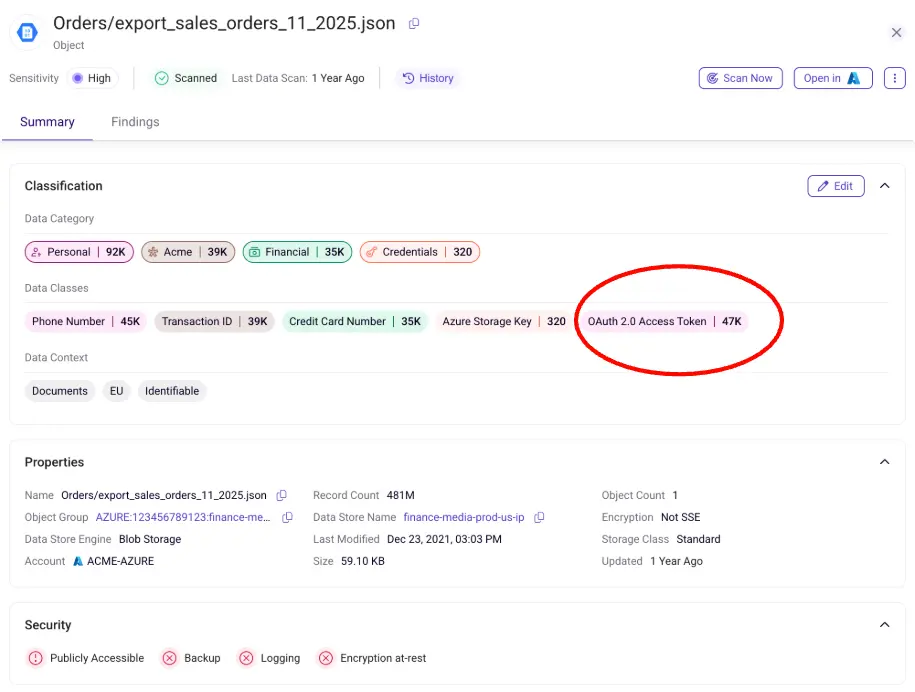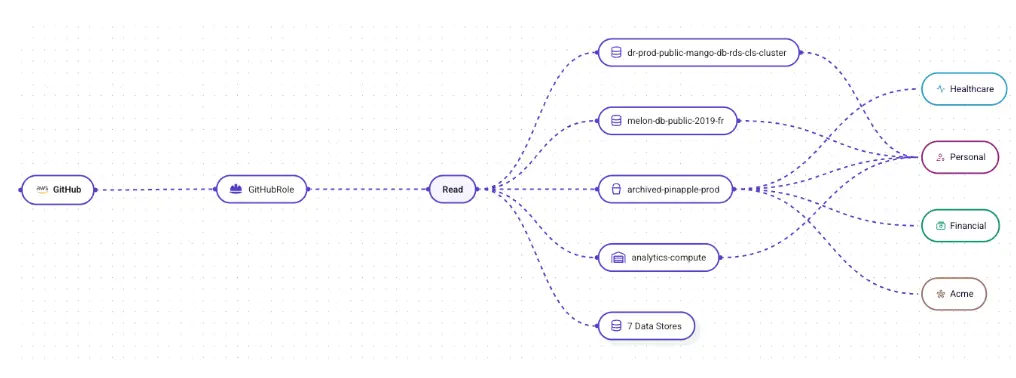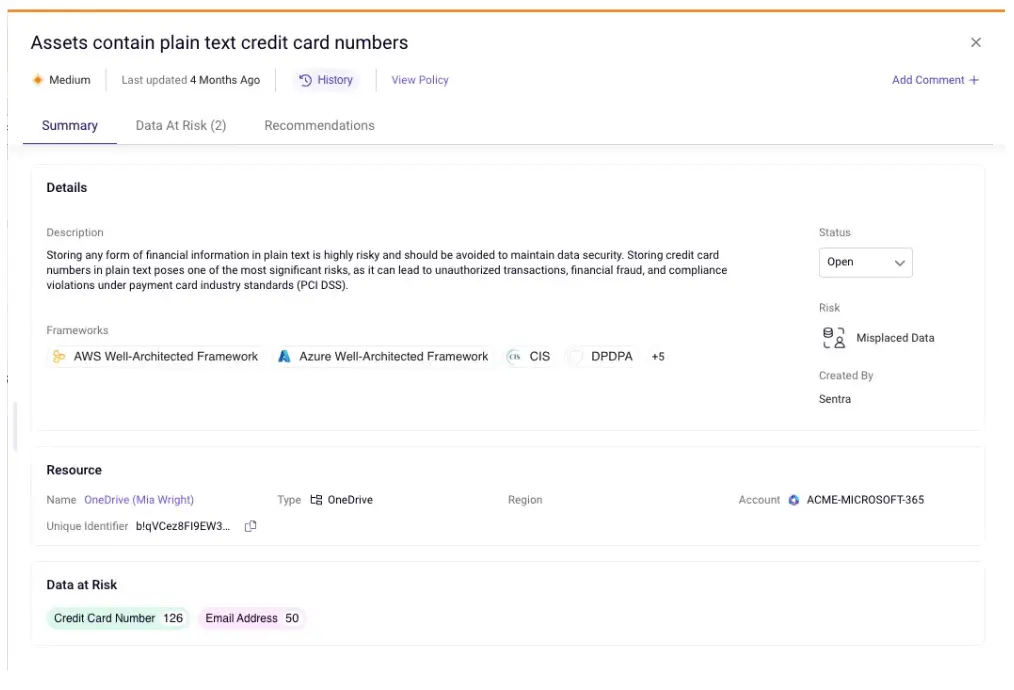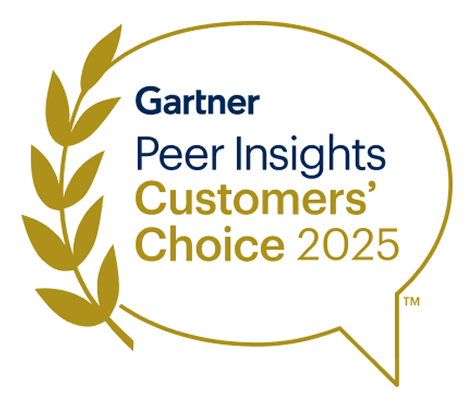Hybrid Environments: Expand DSPM with On-Premises Scanners
Data Security Posture Management (DSPM) has quickly become a must-have for organizations moving to the cloud. By discovering, classifying, and protecting sensitive data across SaaS apps and cloud services, DSPM gave security teams visibility into data risks they never knew they had before.
But here’s the reality: most enterprises aren’t 100% cloud. Legacy file shares, private databases, and hybrid workloads still hold massive amounts of sensitive data. Without visibility into these environments, even the most advanced DSPM platforms leave critical blind spots.
That’s why DSPM platform support is evolving - from cloud-only to truly hybrid.
The Evolution of DSPM
DSPM emerged as a response to the visibility problem created by rapid cloud adoption. As organizations moved to cloud services, SaaS applications, and collaboration platforms, sensitive data began to sprawl across environments at a pace traditional security tools couldn’t keep up with. Security teams suddenly faced oversharing, inconsistent access controls, and little clarity on where critical information actually lived.
DSPM helped fill this gap by delivering a new level of insight into cloud data. It allowed organizations to map sensitive information across their environments, highlight risky exposures, and begin enforcing least-privilege principles at scale. For cloud-native companies, this represented a huge leap forward - finally, there was a way to keep up with constant data changes and movements, helping customers safely adopt the cloud while maintaining data security best practices and compliance and without slowing innovation.
But for large enterprises, the model was incomplete. Decades of IT infrastructure meant that vast amounts of sensitive information still lived in legacy databases, file shares, and private cloud environments. While DSPM gave them visibility in the cloud, it left everything else in the dark.
The Blind Spot of On-Prem & Private Data
Despite rapid cloud adoption and digital transformation progress, large organizations still rely heavily on hybrid and on-prem environments, since data movement to the cloud can be a year’s long process. On-premises file shares such as NetApp ONTAP, SMB, and NTFS, alongside enterprise databases like Oracle, SQL Server, and MySQL, remain central to operations. Private cloud applications are especially common in regulated industries like healthcare, finance, and government, where compliance demands keep critical data on-premises.
To scan on premises data, many DSPM providers offer partial solutions by taking ephemeral ‘snapshots’ of that data and temporarily moving it to the cloud (either within customer environment, as Sentra does, or to the vendor cloud as some others do) for classification analysis. This can satisfy some requirements, but often is seen as a compliance risk for very sensitive or private data which must remain on-premises. What’s left are two untenable alternatives - ignoring the data which leaves serious visibility gaps or utilizing manual techniques which do not scale.
These approaches were clearly not built for today’s security or operational requirements. Sensitive data is created and proliferates rapidly, which means it may be unclassified, unmonitored, and overexposed, but how do you even know? From a compliance and risk standpoint, DSPM without on-prem visibility is like watching only half the field, and leaving the other half open to attackers or accidental exposure.
Expanding with On-Prem Scanners
Sentra is changing the equation. With the launch of its on-premise scanners, the platform now extends beyond the cloud to hybrid and private environments, giving organizations a single pane of glass for all their data security.
With Sentra, organizations can:
- Discover and classify sensitive data across traditional file shares (SMB, NFS, CIFS, NTFS) and enterprise databases (Oracle, SQL Server, MySQL, MSSQL, PostgreSDL, MongoDB, MariaDB, IBM DB2, Teradata).
- Detects and protects critical data as it moves between on-prem and cloud environments.
- Apply AI-powered classification and enforce Microsoft Purview labeling consistently across environments.
- Strengthen compliance with frameworks that demand full visibility across hybrid estates.
- Have a choice of deployment models that best fits their security, compliance, and operational requirements.
Crucially, Sentra’s architecture allows customers to ensure private data always remains in their own environment. They need not move data outside their premises and nothing is ever copied into Sentra’s cloud, making it a trusted choice for enterprises that require secure, private data processing.
Extending the Hybrid Vision
This milestone builds on Sentra’s proven track record as the only cloud-native data security platform that guarantees data always remains within the customer’s cloud environments - never copied or stored in Sentra’s cloud.
Now, Sentra’s AI-powered classification and governance engine can also be deployed in organizations that require onsite data processing, giving them the flexibility to protect both structured and unstructured data across cloud and on-premises systems.
By unifying visibility and governance across all environments while maintaining complete data sovereignty, Sentra continues to lead the next phase of DSPM, one built for modern, hybrid enterprises.
Real-World Impact
Picture a global bank: with modern customer-facing websites and mobile applications hosted in the public cloud, providing agility and scalability for digital services. At the same time, the bank continues to rely on decades-old operational databases running in its private cloud — systems that power core banking functions such as transactions and account management. Without visibility into both, security teams can’t fully understand the risks these stores may pose and enforce least privilege, prevent oversharing, or ensure compliance.
With hybrid DSPM powered by on-prem scanners, that same bank can unify classification and governance across every environment - cloud or on-prem, and close the gaps that attackers or AI systems could otherwise exploit.
Conclusion
DSPM solved the cloud problem. But enterprises aren’t just in the cloud, they’re hybrid. Legacy systems and private environments still hold critical data, and leaving them out of your security posture is no longer an option.
Sentra’s on-premise scanners mark the next stage of DSPM evolution: one unified platform for cloud, on-prem, and private environments. With full visibility, accurate classification, and consistent governance, enterprises finally have the end-to-end data security they need for the AI era. Because protecting half your data is no longer enough.
<blogcta-big>









.webp)






